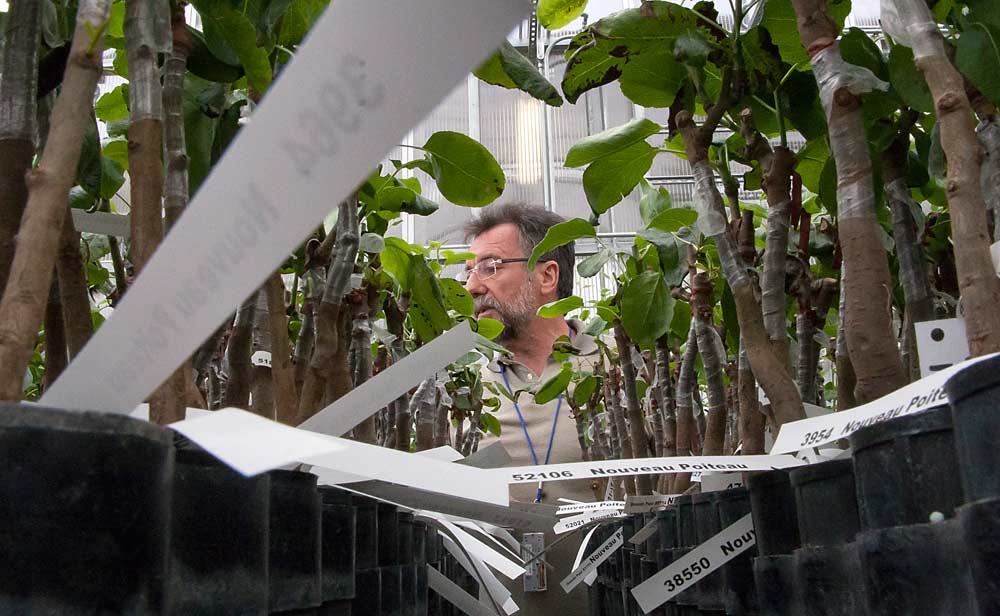
Lauri Guerra, Washington Department of Agriculture plant pathology project coordinator, gives a tour of the agency’s new greenhouse after a ribbon-cutting ceremony Thursday, May 11, 2017, in Prosser, Washington. The facility will expedite and expand the tree fruit industry’s efforts to screen plant material for viruses. (Ross Courtney/Good Fruit Grower)
The newest research greenhouse in Prosser, Washington, will dramatically expedite and expand the tree fruit industry’s ability to identify viruses and prevent their spread.
“We will double the capacity,” said Lauri Guerra, Washington Department of Agriculture plant pathology project coordinator, at a dedication ceremony of the $750,000 greenhouse on Thursday at the Washington State University’s Irrigated Agriculture Research and Extension Center.
Guerra and his staff have been using the new greenhouse since February 2016.

Roughly 40 people turned out to see the dedication of the Washington Department of Agriculture’s new greenhouse at Washington State University’s Irrigated Agriculture Research and Extension Center. (Ross Courtney/Good Fruit Grower)
Before that, in the old greenhouse, he had few automated controls over the temperature and humidity, prompting him to drape shade cloth to create gradient conditions inside. It was not only more work, but it led to poor scientific results, such as false negatives in virus screens.
Roughly 40 people, growers, nursery owners, state officials and university representatives, turned out for a brief dedication ceremony and a tour by Guerra.
Construction was funded by assessments on nurseries.
The 4,680-square-foot greenhouse features three growing chambers, each with automated temperature and humidity controls to create virus-friendly conditions, allowing Guerra and researchers to more quickly spot symptoms and index results.

Guerra searches for symptomatic pear trees amid rows inside one of the greenhouses chambers. (Ross Courtney/Good Fruit Grower)
The Department of Agriculture’s fruit tree planting stock certification has about 35,000 registered mother trees propagated for the industry.
Tom Wessels, the department’s retired plant services program manager, recalled for the crowd the 1980s when he and his staff indexed virus infections in the field, a lengthy process often slower than the nurseries’ commercial propagations.
They moved into a greenhouse, renting a bench for winter indexing several years, back when the industry had few varieties and fewer overall trees.
“It’s a perfect example of cooperation between the state agency, the university and the industry it serves,” he said.






Leave A Comment